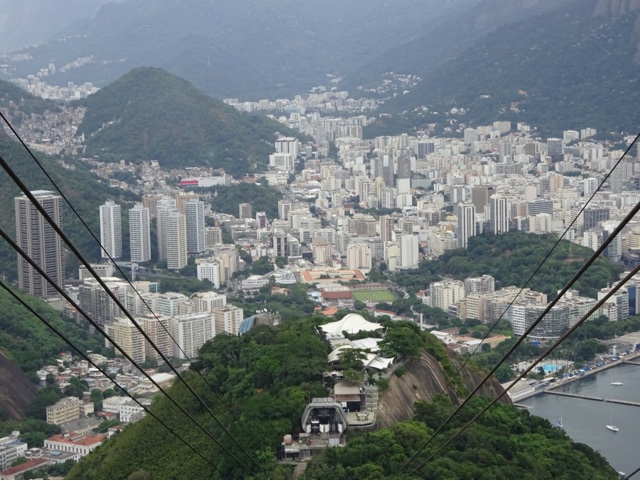Today we say goodbye to Rio. This city is one of the most interesting places we've been to so far. It has so many different aspects- culture, food, people, architecture, natural surroundings- rolled up all into one that it's difficult to pick out the best parts.
For example, today this guy stole my breakfast bun just as I was going to sit down to breakfast:
Yesterday we went up the cable cars to Sugarloaf for some amazing views:
We then found a remarkable restaurant not 500 meters away from the base inside a Military School and the view was amazing:
The favelas and the caste system really hit both of us hard as we've not seen anything like it. Even going up the cable cars, you could see sides of mountains with favelas. I mentioned there were over 600 of these in Rio alone; locals say there are over a 1,000 of these neighborhoods and more than 1.3 million inhabitants ( slightly more than the 1.2 million favela residents in São Paulo Brazil).
The homeless are also quite visible. They are downtown and stay in packs with nothing other than the clothes on their backs.
With everything that we heard and told to watch out for, we were surprised that we weren't accosted or robbed during our two week stay. We were actually amazed at how friendly the people were and how helpful they tried to be with directions and translations even though English is a very foreign language here. The people are definitely friendlier here than any other part of Central or South America that we've been to.
It's been almost 4 months since we started our Around the World trip and we are now flying over to Casablanca, Morocco to start our journey in Africa!





































